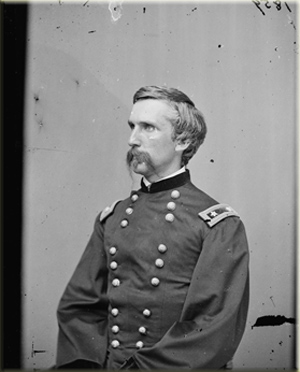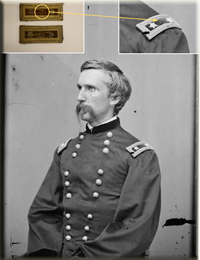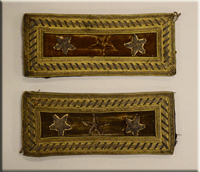Honor Answering Honor: “Bloody Chamberlain” and the Surrender at Appomattox
Honor Answering Honor: “Bloody Chamberlain” and the Surrender at Appomattox
Jimmy Price
Programs and Education Department
National Museum of the United States Army Project OfficeIt was one of the most iconic moments in all of American history – the famed “stillness” at Appomattox. After four years of bitter struggle, General Ulysses S. Grant’s armies had finally vanquished General Robert E. Lee’s vaunted Army of Northern Virginia. While the surrender terms had been agreed upon by Lee and Grant on April 9, 1865, the formal surrender ceremony did not take place until April 12th. Neither Lee nor Grant elected to attend the surrender ceremony. Instead, Grant selected Brevet Major General Joshua Lawrence Chamberlain to receive the surrender of the Confederate infantry.
Chamberlain’s meteoric rise from college professor to Union general is now the stuff of legend, but in April of 1861, no one could have foreseen the role that he would play in preserving the Union. When the call to the colors was sounded following the firing on Fort Sumter, Chamberlain was residing in his native Maine, teaching rhetoric and modern languages at Bowdoin College. Stating that “I fear, this war, so costly of blood and treasure, will not cease until men of the North are willing to leave good positions,” Chamberlain wrote to the governor of Maine requesting an appointment and became a lieutenant colonel in the 20th Maine Infantry Regiment in 1862.
While Chamberlain’s role at Gettysburg is oft-repeated, his contributions during the Richmond-Petersburg Campaign of 1864-65 were of equal import. During that campaign Chamberlain sustained what was thought to be a fatal wound to the groin on June 18, 1864. Fearing his death was imminent, Grant promoted Chamberlain to brigadier general as a symbolic act of thanks. Miraculously, Chamberlain survived and returned to command in late 1864.
He was in command of the Army of the Potomac’s 1st Brigade, First Division, V Corps on March 29, 1865 when he was severely wounded again, earning him a brevet promotion to Major General and the nickname “Bloody Chamberlain.” Chamberlain was profoundly honored to command the surrender ceremony. Writing to his wife just one day later, he stated:
For my personal part I…have been in five battles…twice wounded myself—my horse shot—in the front line when the flag of truce came through from Lee—had the last shot + the last man killed, in their campaign; + yesterday was designated to receive the surrender of the arms of Lee's Army of Northern Virginia.
The ceremony itself deeply moved Chamberlain, who would later write:
Instructions had been given; and when the head of each division column comes opposite our group, our bugle sounds the signal and instantly our whole line from right to left, regiment by regiment in succession, gives the soldier's salutation, from the "order arms" to the old "carry"—the marching salute. Gordon at the head of the column, riding with heavy spirit and downcast face, catches the sound of shifting arms, looks up, and, taking the meaning, wheels superbly…with profound salutation as he drops the point of his sword to the boot toe; then facing to his own command, gives word for his successive brigades to pass us with the same position of the manual, honor answering honor.
At the time of his death, Chamberlain did not possess the legendary status he now enjoys among key figures in American military history. He went on to become a four-term governor of Maine and the president of Bowdoin College. He remained a relatively unknown figure until he was featured in the 1974 Pulitzer Prize-winning novel The Killer Angels (adapted to film in 1993’s Gettysburg) written by Michael Shaara and in Ken Burns’ renowned Civil War documentary.
Prominently featured in the Preserving the Nation Gallery, the National Museum of the United States Army will display several Chamberlain artifacts, including the rank insignia  he wore at Appomattox Court House. The items were purchased by the U.S. Army’s Center of Military History from renowned historical artist Don Troiani, who used them for his painting The Last Salute. It appears that Chamberlain removed the one star from his brigadier general shoulder straps and had two stars sewn on when he was brevetted to major general.
he wore at Appomattox Court House. The items were purchased by the U.S. Army’s Center of Military History from renowned historical artist Don Troiani, who used them for his painting The Last Salute. It appears that Chamberlain removed the one star from his brigadier general shoulder straps and had two stars sewn on when he was brevetted to major general.
A great Army deserves a great Museum. The National Museum of the United States Army now under construction at Fort Belvior, Virginia, will be a special landmark and an American treasure that you can take pride in helping create. Donate now at www.armyhistory.org


